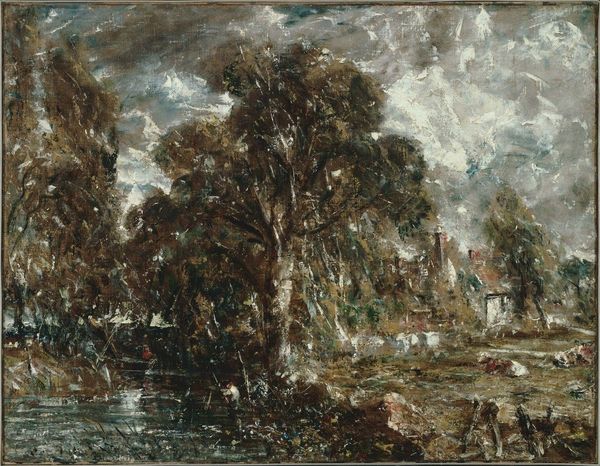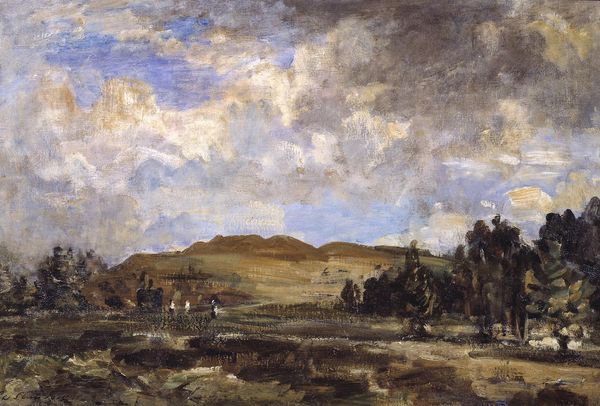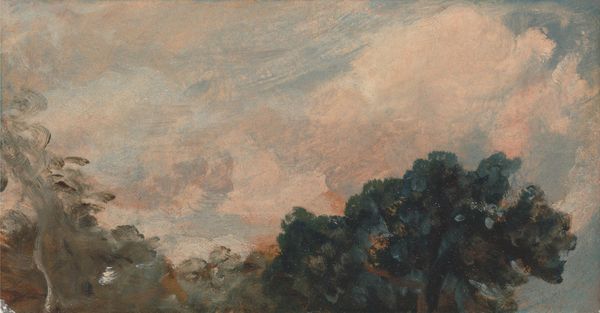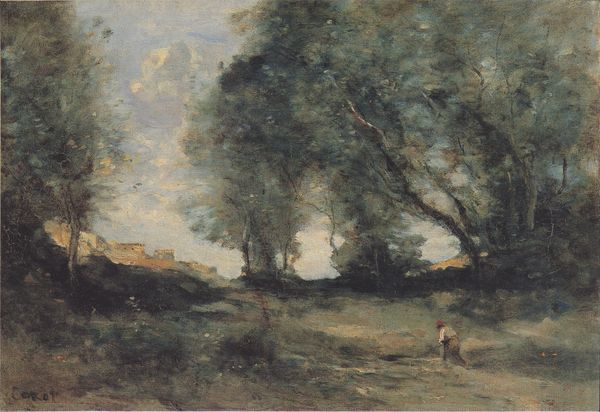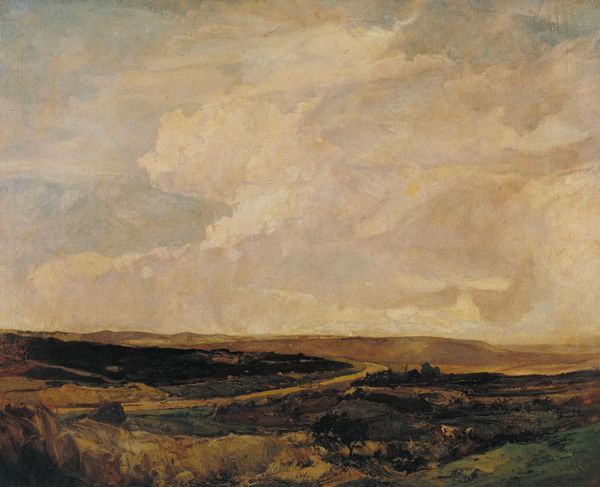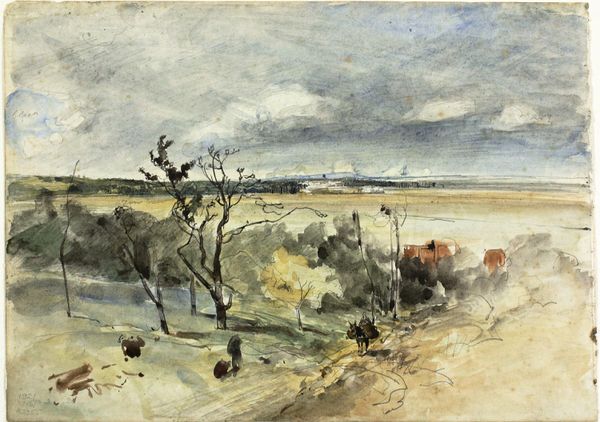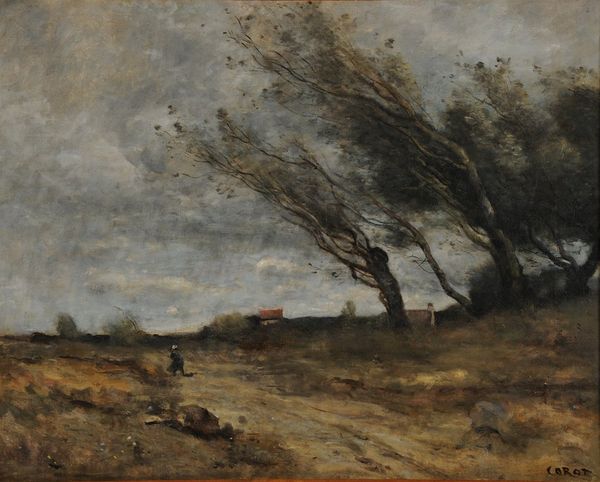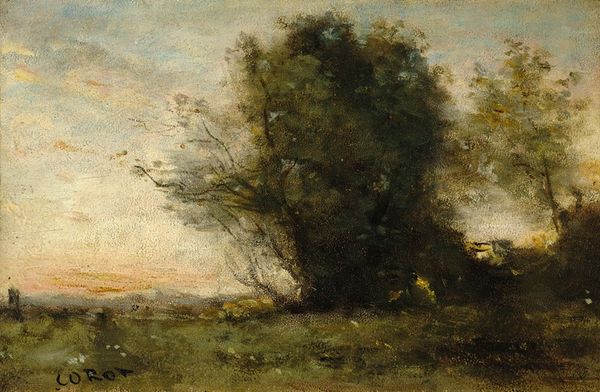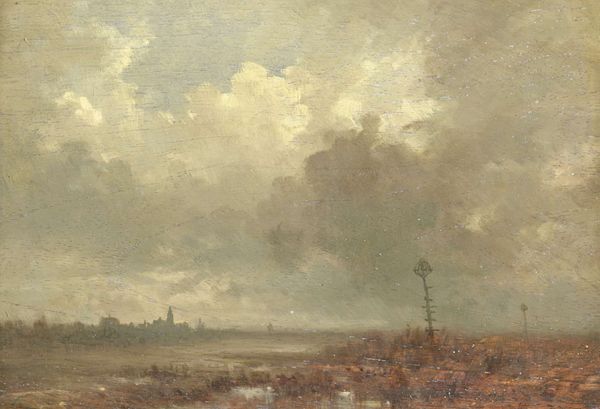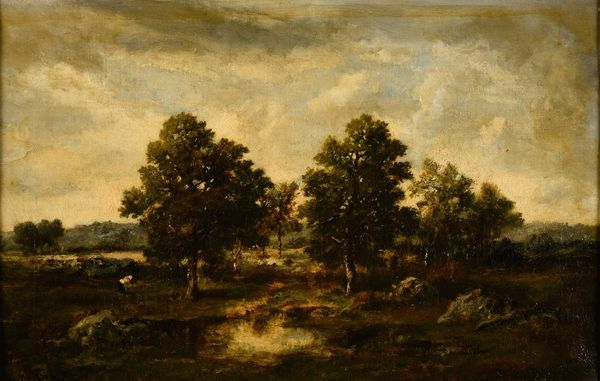
plein-air, oil-paint
#
plein-air
#
oil-paint
#
landscape
#
oil painting
#
romanticism
#
realism
Copyright: Public Domain: Artvee
Editor: Here we have "English Landscape" by John Constable, done with oil paint, seemingly en plein air. I'm struck by the rough, almost unfinished quality. How should we approach this work? Curator: We need to consider the social context. Constable's focus on the English landscape departs from earlier traditions, where landscapes often served as backdrops for historical or mythological narratives. What does it tell us about the shift in values, about the importance of the local and the everyday? Editor: It feels more immediate, less staged. But what about the materials? What does the handling of the paint reveal? Curator: Exactly. Notice the visible brushstrokes, the lack of meticulous detail. Constable's application of paint is almost tactile, emphasizing the material reality of the landscape itself, not just its aesthetic beauty. What sort of labor is made visible through that materiality? Editor: It’s interesting to consider this in light of the industrial revolution. Were people beginning to see the value in things that were handmade because so many objects were becoming mass-produced? Curator: Precisely. Consider this a response to increasing industrialization – a romanticized, perhaps idealized, view of agrarian life and pre-industrial modes of production. Editor: So the value isn't just in what's depicted, but also in how it's made, and what that making represents socially. Curator: Absolutely. The materiality of the painting, the visible brushstrokes, become a statement. Editor: This makes me think about landscape art in a completely new way! It’s not just about pretty scenery. Curator: Exactly! It is all about the labor and values that go into making art in response to changes in society.
Comments
No comments
Be the first to comment and join the conversation on the ultimate creative platform.

